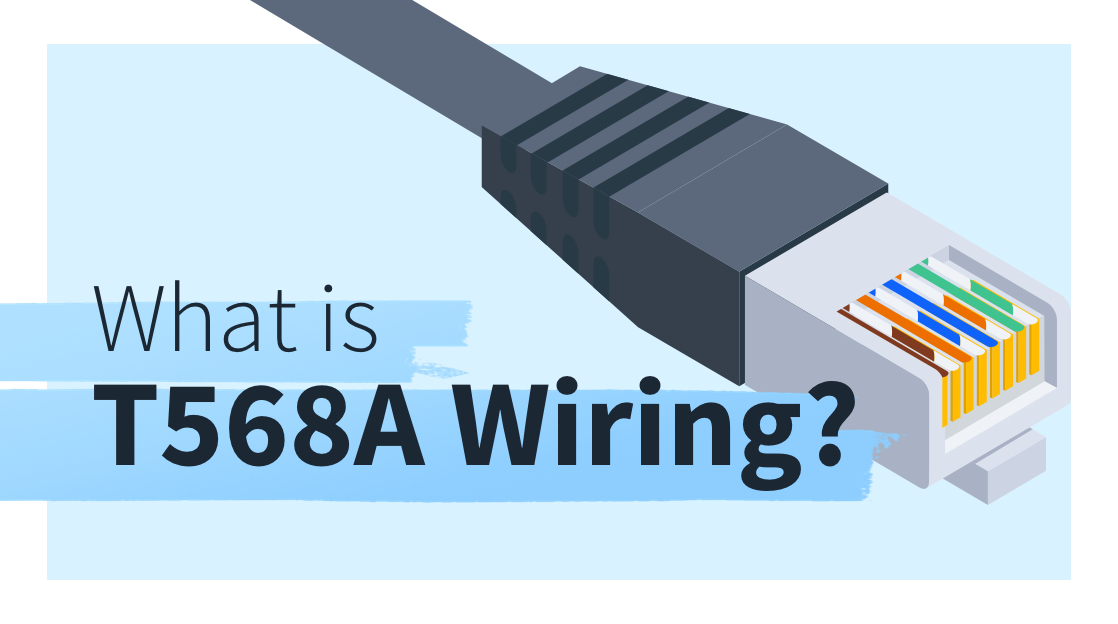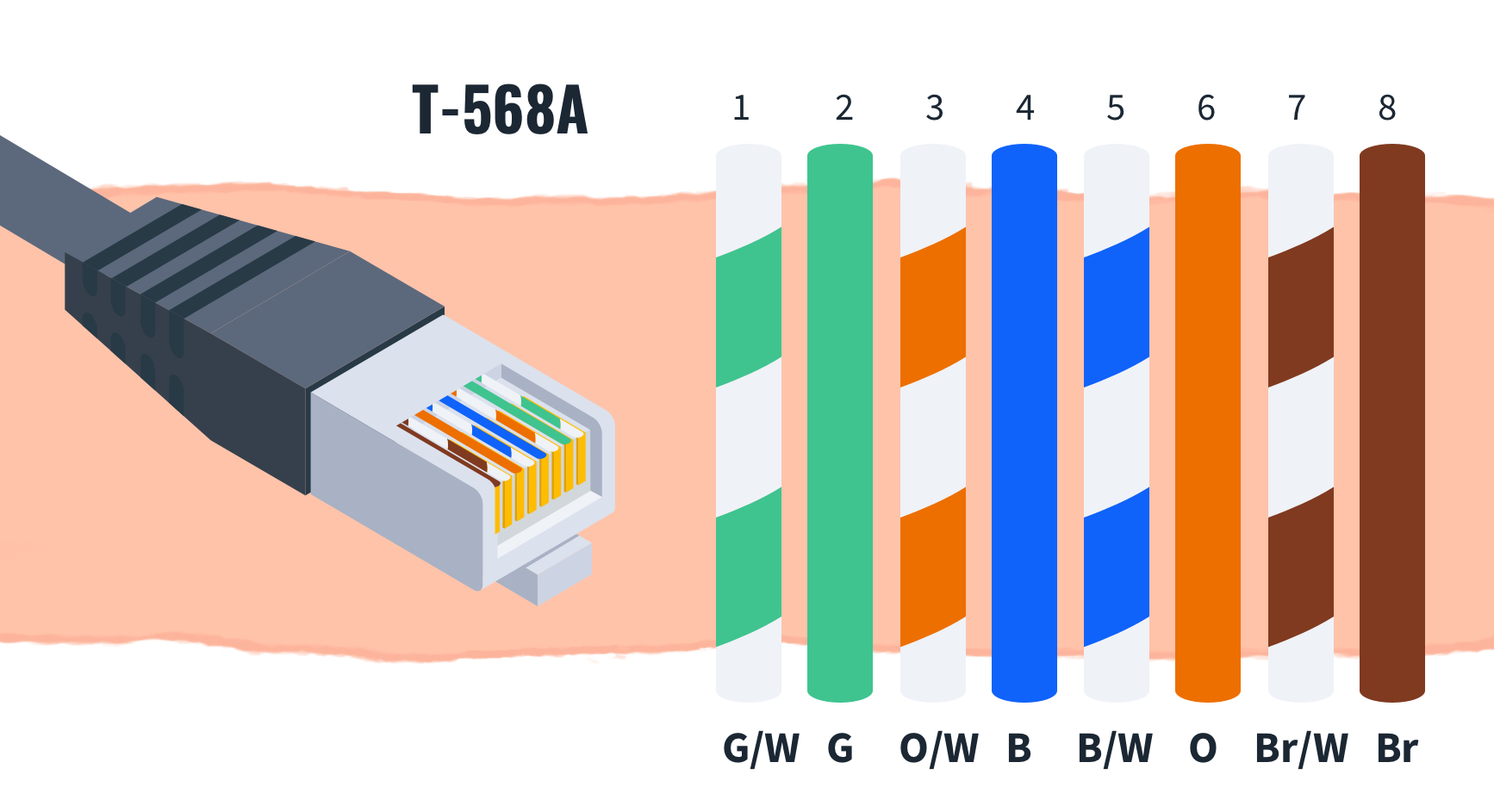What is T568A Wiring?

Quick Definition: T568A wiring is a standardized method for organizing the four twisted pairs of wires within Ethernet cables. These wires are arranged in a specific order to ensure proper communication between network devices when connected to RJ45 jacks or ports. T568A wiring is commonly used for connecting devices such as computers and switches in Ethernet networks, and it plays a crucial role in maintaining consistent cable termination and communication.
The T568A standard provides a consistent method for terminating ethernet cables. Within each ethernet cable, there are multiple individual wires. The term "terminating" refers to connecting each of those wires to some hardware, such as an RJ45 plug or patch panel jack.
Generally, when preparing for certification exams like Network+, it's best to familiarize yourself with common networking standards and practices before taking the exam.
What is T568A Wiring?
T568A is a wiring standard established by the Telecommunications Industry Association (TIA) and the Electronic Industries Alliance (EIA). It is a standard that defines the ordering of the four twisted pairs of wires within ethernet cables.
T568A Explained
Ethernet cables are made up internally of four twisted pairs of cables. In a T568A cable, these wires are arranged in a specific order before they are terminated to an RJ45 jack or port. This is so that two network devices connected using an ethernet cable can communicate, as the wires in one port will be matched to the same wires in the other port.
A different standard we’ll look at later, T568B, uses a slightly different wire arrangement that is not interchangeable with T568A.
Is TIA/EIA-568A the Same as T568A?
TIA/EIA-568A is the same as T568A; T568A is just a shorthand version of TIA/EIA-568A.
What is T568A Most Commonly Used For?
T568A is commonly used anywhere ethernet cables are used to connect two network devices, like a computer’s NIC, to a switch or network patch panel.
How T568A Wiring Works
Ethernet cabling seems simple enough, but you should know a few specific things that affect why a standard like T568A matters. The inside of the cable contains eight individual wires and a plastic insert. Each of the wires terminates to a pin in a connector, and the order is very important.
T568A Color Code
Ethernet cabling’s four pairs of wires always come in four colors: green, blue, orange, and brown. One of each pair will be a solid color; the other is striped with the color and white. The colors are used to describe the order of the wires when terminated.
T568A Cable Structure
Along with the four twisted pairs, a cable using T568A also contains a plastic insert, sometimes called a star filler. It helps reduce interference and add density to support the cable and minimize bending. A sheathing covers the wiring and inserts to protect them.
T568A Pin Assignments
An RJ45 connector has eight pins, one for each wire. Each wire is terminated to one of the eight pins. The order of the wires determines whether a cable complies with the T568A standard.
T568A Wiring Configuration
The T568A wiring standard dictates that the wires are arranged in the following order, starting with the first pin on the RJ45 jack: green/white, green, orange/white, blue, blue/white, orange, brown/white, brown. This can be seen easier in the diagram below.
T568A Wiring Diagrams and Examples
This diagram shows the wiring order for T568A as if you were looking down onto an RJ45 connector.
568A Wiring Diagram
T568A Vs. T568B
T568A isn’t the only wiring standard that exists, however. There is also the very similar T568B.
What is T568B?
The T568B standard is very similar to T568A, except two pairs are switched: green and orange. T568B wires are in the following order: orange/white, orange, green/white, blue, blue/white, green, brown/white, brown.
Are TIA/EIA 568A and TIA/EIA 568B Interchangeable?
No, these standards are not interchangeable. For example, if you were installing wiring and wired a patch panel with one standard and the network jacks with another standard, the devices connected via that wiring would be unable to communicate. You would essentially be connecting different pins to each end.
As long as you are consistent across all the wiring done in a network, either standard is fine to use, but T568A is more common.
Does the US Government Require T568A?
The US government does require the use of T568A by contractors working on federal contracts. This is for consistency across all government facilities, preventing one building from using T568A and another building using T568B.
T568A and Crossover
In the unfortunate situation where the two wiring standards are both used in one network, there is a solution: crossover cables.
What is Crossover and Crossover Cables?
A cable that follows either standard on both ends of the cable is known as a “straight through” cable, as all the wires pass straight through to the same pins on both connectors.
So what’s the opposite of “straight through?” That would be “crossover,” where the wires instead are determined using T568A on one end and T568B on the other.
A crossover cable can be used to connect two ports that are wired with different standards. However, they are more typically used to connect two of the same type of devices together, like connecting two computers directly to each others’ NICs.
How Do Crossover Cables Relate to T568A?
One end of a crossover cable is wired to the T568A standard, and the other end is wired to the T568B standard.
Wrapping Up
The T568A wiring standard is essential to consistent cable termination throughout a network. It enables uniformity and consistency and ensures solid communication between devices.
By adhering to this standard, a network admin can ensure their devices can communicate reliability with optimal performance. Learn more about cabling and devices from CBT Nuggets – your first 7 days are free.
delivered to your inbox.
By submitting this form you agree to receive marketing emails from CBT Nuggets and that you have read, understood and are able to consent to our privacy policy.
